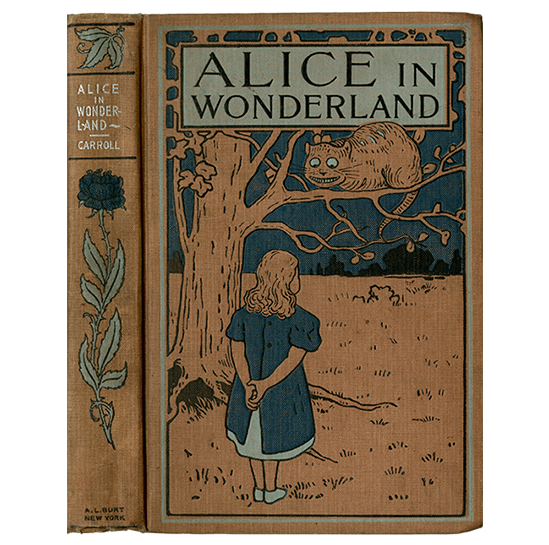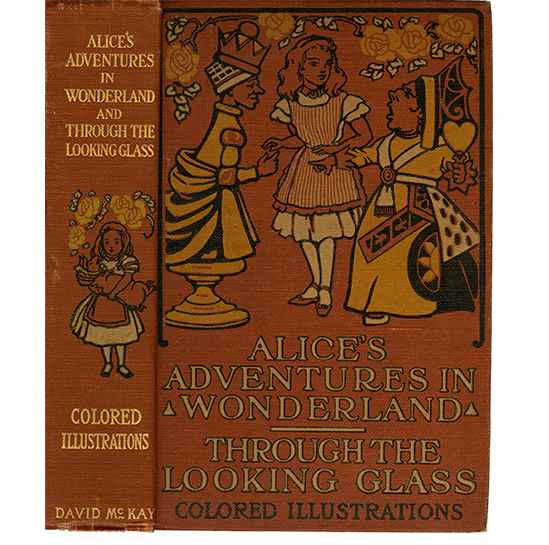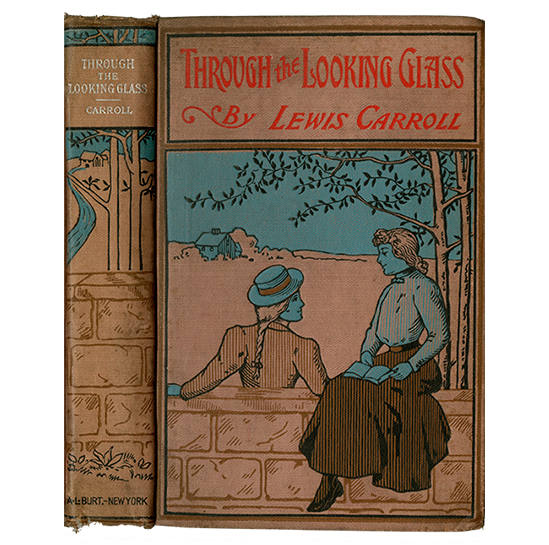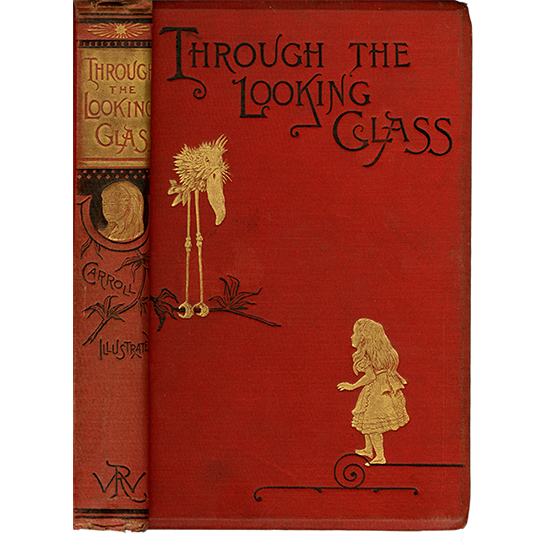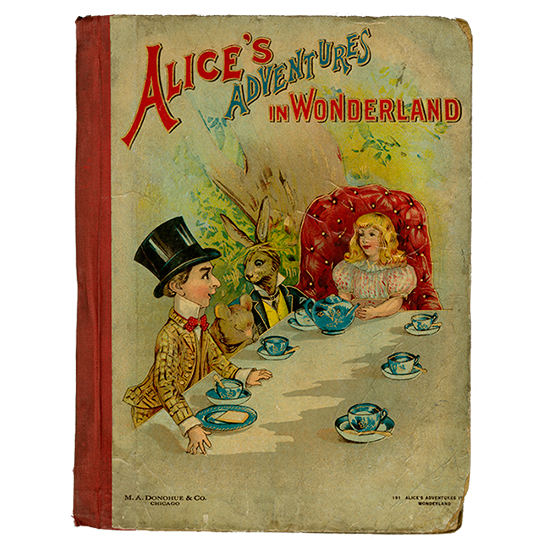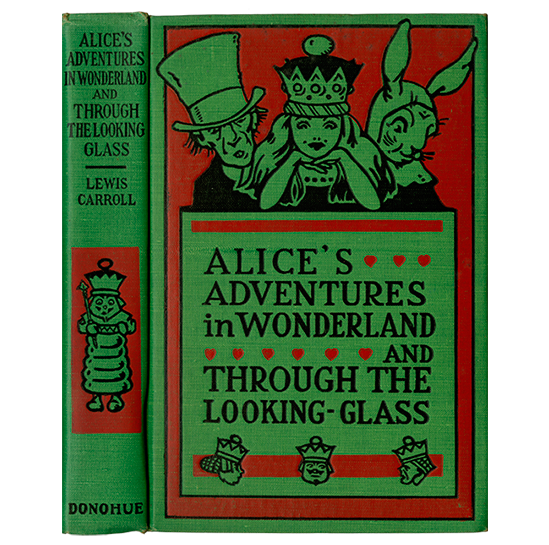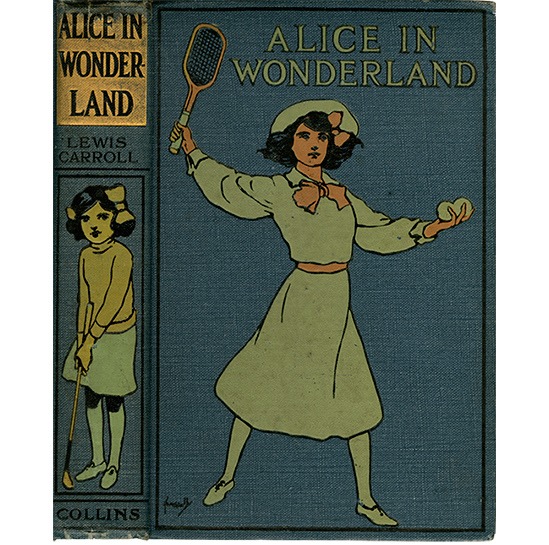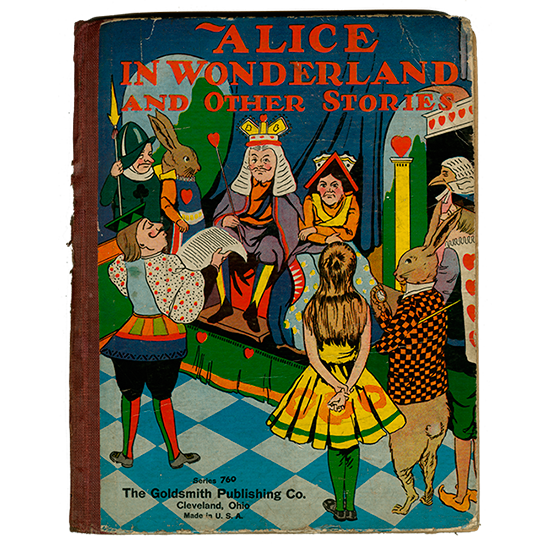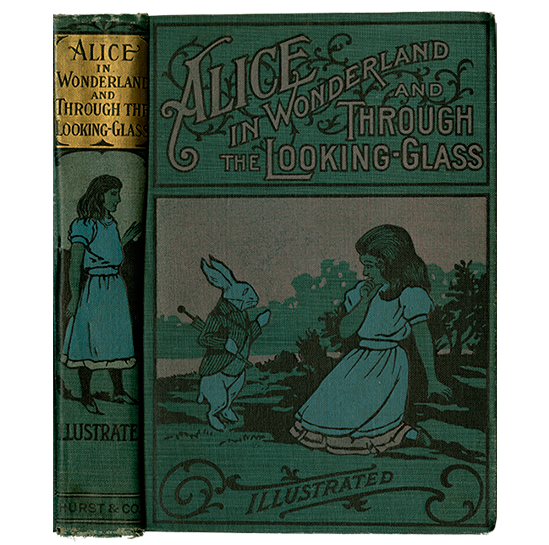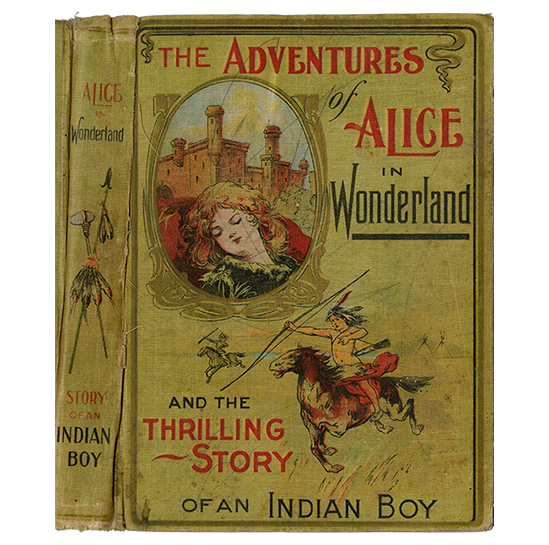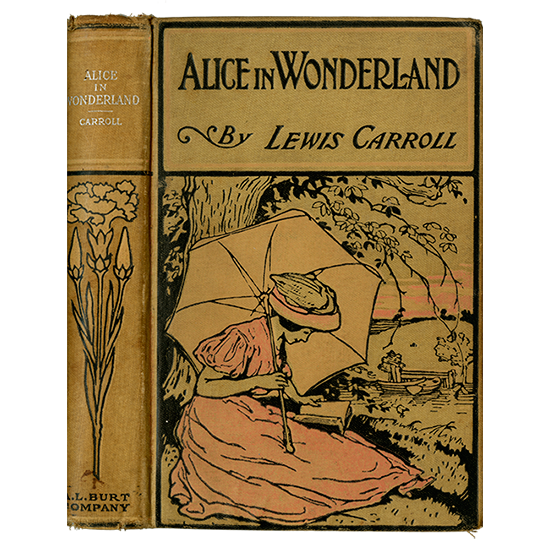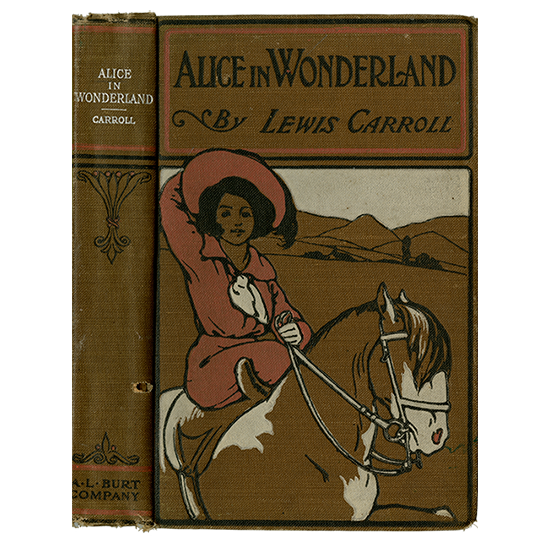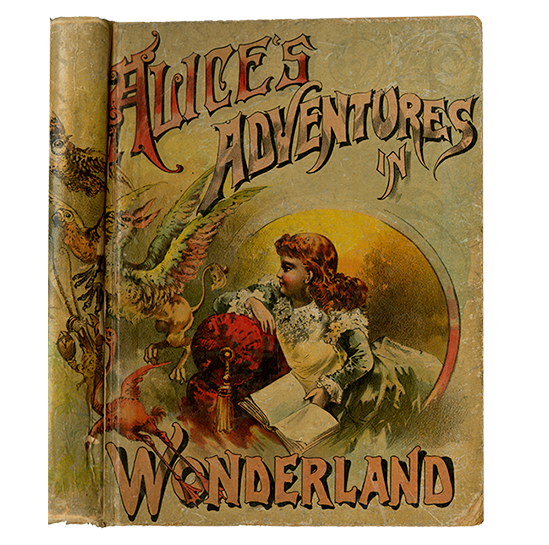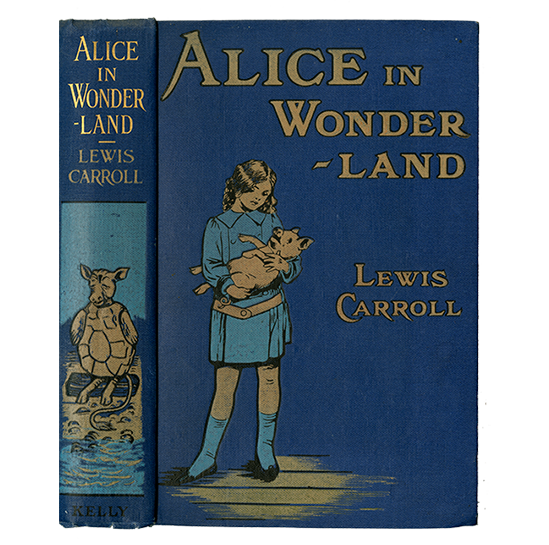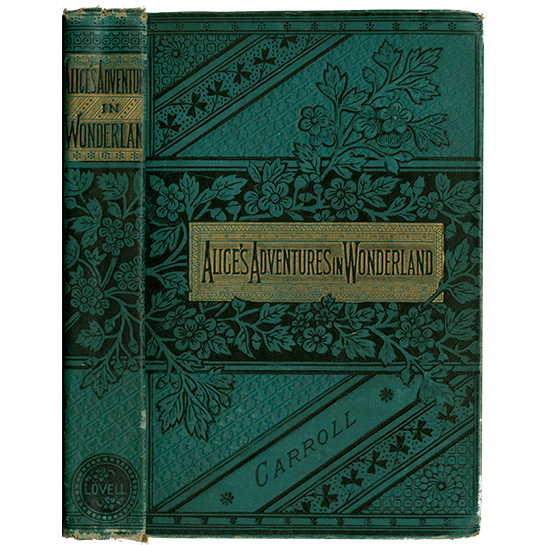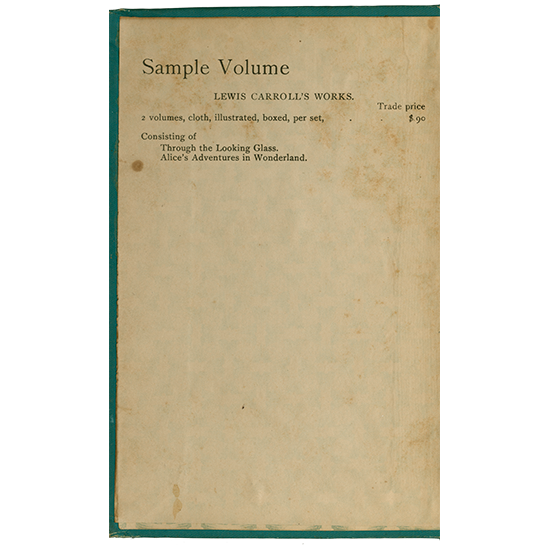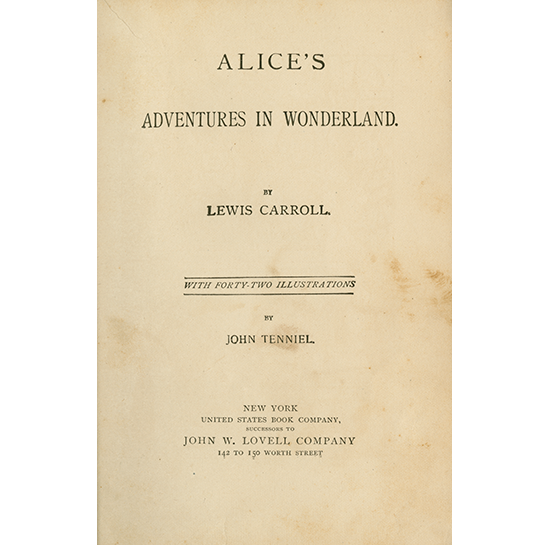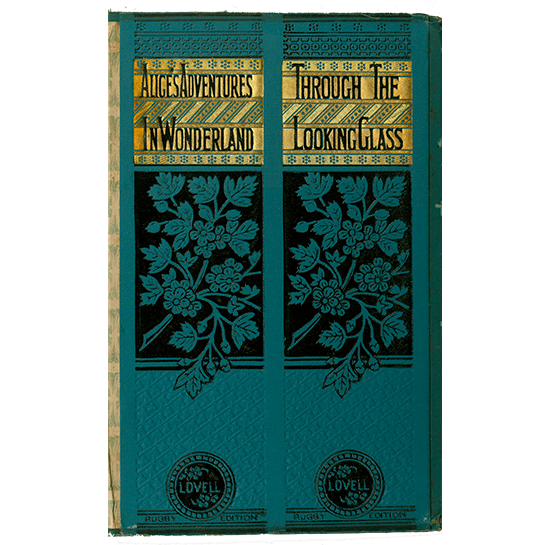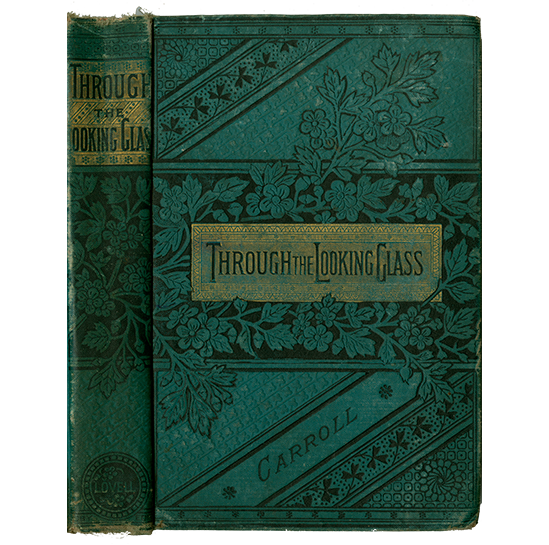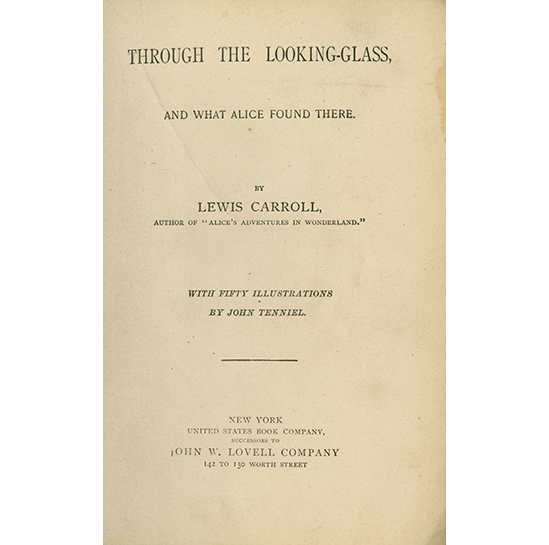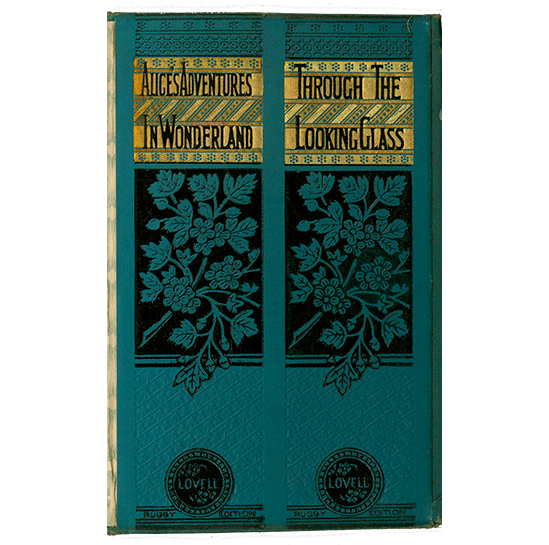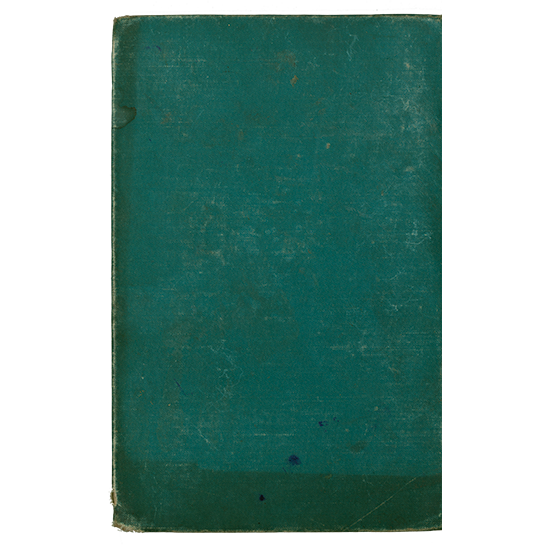Bindings
“I know who I was when I got up this morning,
but I think I must have been changed several times since then.”
Assorted Alice bindings.
Wonderland Cover to Cover
The story of Alice’s adventures first appeared in the stylish red cloth gilt-stamped bindings of Macmillan in London and Appleton in New York. In the 1860s, major publishers generally used uniform bindings that were easily recognizable and assumed a dignified appearance on the shelves of any respectable middle-class parlor.
This soon would change, and Lewis Carroll’s instant classic became an ideal candidate for creativity in book design. Advances in book binding technology created opportunities for covers with full-color scenes and illustrated endpapers that enticed prospective buyers.
As more illustrators were inspired to interpret the story of Alice and her adventures, the binding became a veritable canvas for artistic expression and clever graphic design. However, some publishers chose designs amusingly inappropriate to the story within. The bindings shown on the left date from the late 19th century into the 1930s and demonstrate the varied and often creative ways that Carroll’s tale has been portrayed and marketed.
Browse various publisher bindings for Alice in Wonderland on the left.
Alice’s Adventures in Wonderland.
By Lewis Carroll.
New York: Macmillan and Co., 1884.
In the 19th century, Macmillan’s New York office created more beautiful bindings than did the home office in London. We think Carroll would have been more pleased with American publishing had he seen this fancy pictorial gilt-inlaid binding.
Exhibit Item 4.1
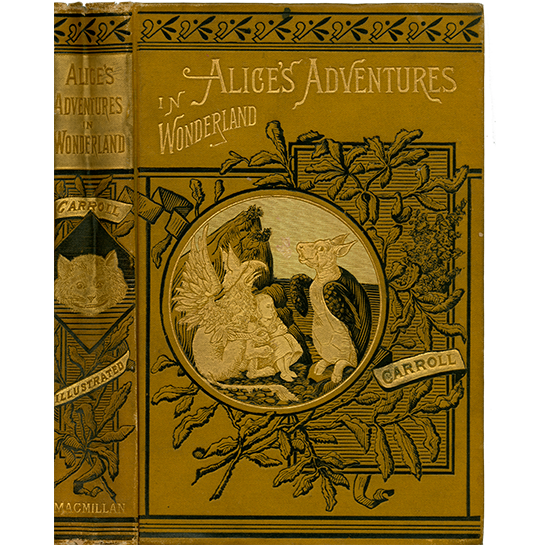
Alice’s Adventures in Wonderland.
Through the Looking Glass.
By Lewis Carroll.
New York: United States Book Company, successors to John W. Lovell Company, circa 1891-93.
These two salesman’s samples are from the United States Book Company, a conglomerate led by the well-known book publisher John W. Lovell. Elaborate bindings such as these were typical of Lovell’s hardbacks and of the period. The inside covers note that the two books are available as a boxed set for $0.90, equivalent to roughly $20 today.
Exhibit Items 4.2 & 4.3

